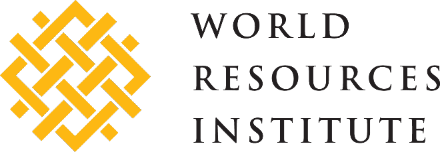Geographic Scope: *Global*
Checklist of CITES Species
CITES (the Convention on International Trade in Endangered Species of Wild Fauna and Flora) is an international agreement between governments that aims to ensure that international trade in specimens of wild animals and plants does not threaten their survival. The Checklist of CITES Species allows the exploration of more than 36,000 species of animals and plants and their degree of protection.
CITES Trade Database
The Convention on International Trade in Endangered Species of Wild Fauna and Flora (CITES) Trade Database, managed by the United Nations Environment Program World Conservation Monitoring Centre (UNEPWCMC) on behalf of the CITES Secretariat, is unique and currently holds over 13 million records of trade in wildlife and over 34,000 scientific names of taxa listed in the CITES Appendices. Around a million records of trade in CITES-listed species of wildlife are currently reported annually and these data are entered into the CITES Trade Database (an Oracle relational database) as soon as they are received by UNEP-WCMC. CITES annual reports are the only available means of monitoring the implementation of the Convention and the level of international trade in specimens of species included in the CITES Appendices. The CITES Trade Database can be queried and data downloaded from the CITES website (www.cites.org) or the UNEP-WCMC website (http://unep-wcmc.org/citestrade). You can contact UNEP-WCMC directly (see Annex 6 for contact details) if you have a specific data request that you are unable to answer using the online data querying facilities.
Species+
Species+, developed by United Nations Environment Program World Conservation Monitoring Centres (UNEP-WCMC) and the CITES (Convention on International Trade in Endangered Species of Wild Fauna and Flora) Secretariat, is a website designed to assist Parties with implementing CITES, Convention on the Conservation of Migratory Species (CMS) and other multilateral environmental agreements (MEAs). Species+ provides a centralised portal for accessing key information on species of global concern. In particular, Species+ contains information on all species that are listed in the Appendices of CITES and CMS, as well as other CMS Family listings and species included in the Annexes to the EU Wildlife Trade Regulations.
Identification Guide for Ivory and Ivory Substitutes
The information contained within this book was originally developed for the wildlife law enforcement community in connection with its mandate to enforce international endangered species trade regulations and restrictions. Thousands of copies of previous editions of this guidebook have been distributed in three languages throughout the world. The goal is to provide wildlife law enforcement officers, scientists and managers with a visual and non-destructive means of tentatively identifying the authenticity and species origin of suspected ivory for enforcement purposes, including a “probable cause” justification for seizure of suspected illegal material, at ports of entry. Emphasis also remains on carved ivory, mostly because whole teeth are easily identified.
Traditional Asian Medicine Identification Guide for Law Enforcers: Version II
Identification guide for traditional Asian medicines in trade made to assist enforcers with determining which medicines and ingredients are legal or illegal, in the context of the cases they adeal with. The majority of law enforcers have no knowledge of Chinese characters and the many forms that these medicines take. This guide is primarily for law enforcers based outside Asia, in countries where large volumes of traditional Asian medicines are imported. The regions where this version of the guide may be of most use include Europe, North America and Australasia.
ARBOR HARBOR
A reference system linking information on trees and their global trade, especially species at risk of over harvesting. The system integrates data on taxonomy, conservation, geography, and trade regulations, all acquired from online databases or primary literature. Intended users include professionals or enthusiasts working with forest resources and their sustainable use.
XYLOTRON
A complete, self-contained, multi-illumination, field-deployable, open-source platform for field imaging and identification of forest products at the macroscopic scale. The XyloTron platform integrates an imaging system build with off-the-shelf components, flexible illumination options with visible and UV light sources, software for camera control, and deep learning models for identification.
IUU Fishing Dashboard
The Illegal, Unreported and Unregulated (IUU) Fishing Dashboard is a publicly available tool utilizing data from Windward to identify vessels at high risk of IUU fishing and incidents of fishing activities, dark activities, and likely transshipments in three areas of interest in Latin America. The dashboard is intended to serve as a publicly available tool for researchers, analysts, journalists and the overall public to gain an awareness and understanding of Illegal, Unreported and Unregulated Fishing (IUUF) in important areas around Latin America. It provides situational awareness of ongoing activities, as well as historical data going back to 2022, in order to meet various research needs.
The Ocean Actions Index
This is a compilation of input from advocates and researchers who were asked what can be done to better protect the oceans and its workers. This document consists of three levels. The first lists actions that individuals can take. The second itemizes actions governments or companies can take. The third offers broader context.
Wildlife Sentinel
Wildlife Sentinel is an app to help staff at airports, airlines, and other aviation companies report suspected wildlife trafficking and corruption. The app is anonymous and is available for download on the Apple Store and Google Play Store.


